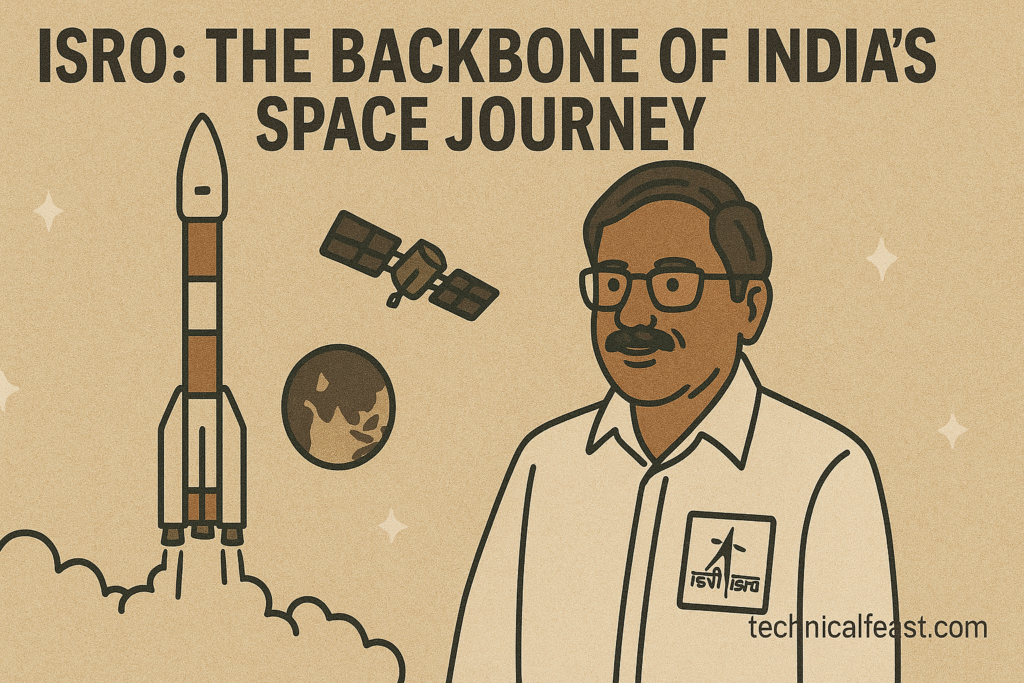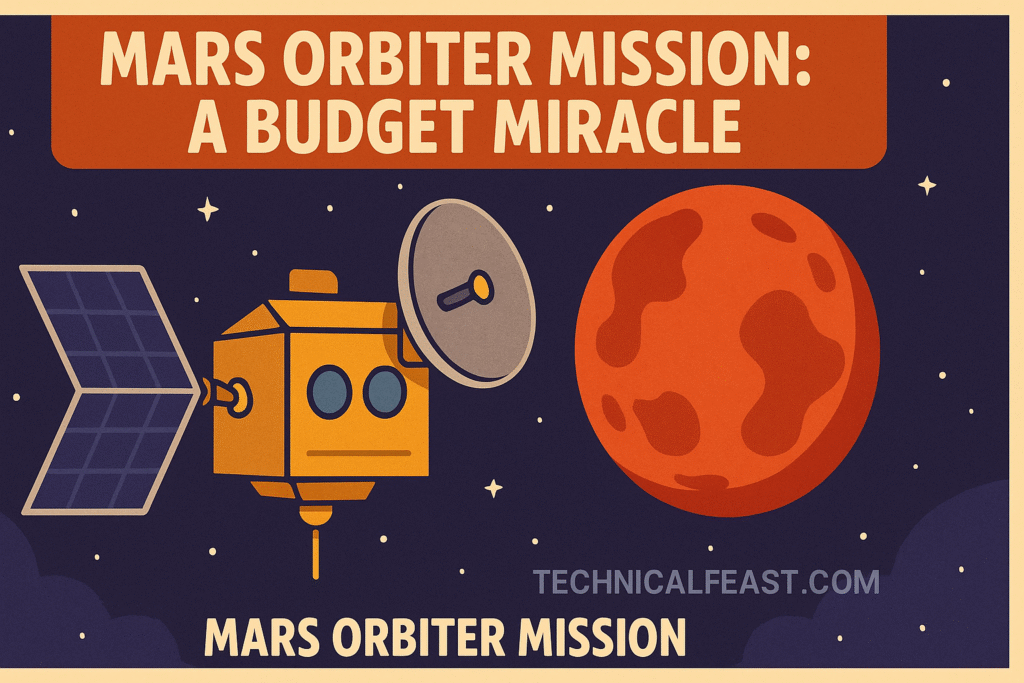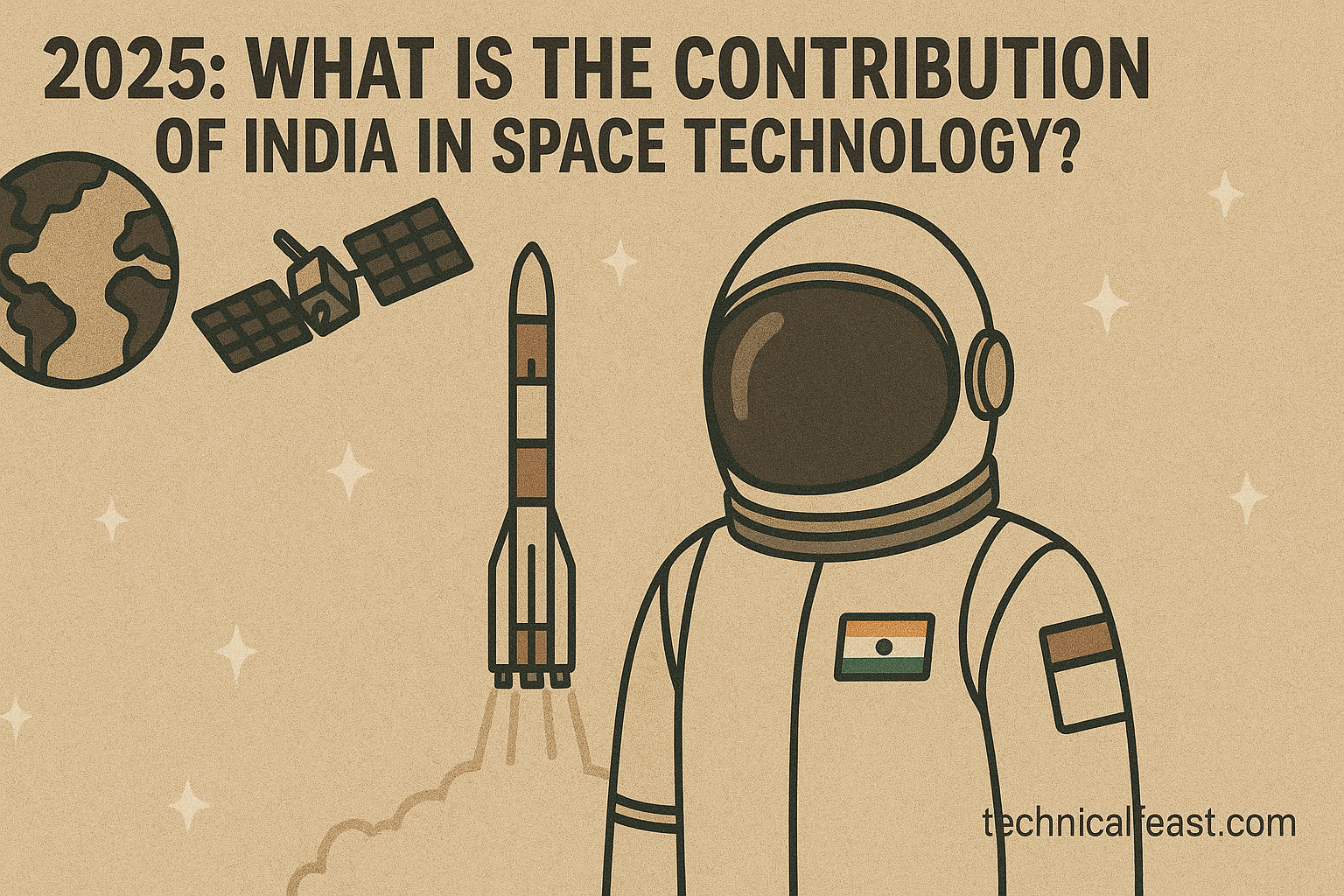India’s Giant Leap into Space
Table of Contents
If someone had asked me a decade ago what India’s space program looked like, I might’ve mumbled something vague about rockets and satellites. But now, when we ask, “what is the contribution of India in space technology?”, the answer is bold, inspiring, and globally recognized.
India, a country once underestimated in terms of scientific capability, has become a space tech powerhouse. Thanks to ISRO — the Indian Space Research Organisation — we’re seeing moon missions, Mars orbiters, and satellite launches that rival the best in the world.
What’s fascinating is how India’s space journey isn’t just about high-tech rockets. It’s about using space for weather forecasts, education, disaster management, and even rural development. This article explores that story in depth, one mission at a time.
1. The Humble Beginnings: When Dreams Took Flight
In the early 1960s, India’s space program was less about satellites and more about chalkboards and bicycles. Literally. In 1963, the first rocket was launched from Thumba in Kerala, and parts of it were transported on a bicycle.
The question, what is the contribution of India in space technology, starts with that image — a simple, ambitious dream backed by visionary scientists like Dr. Vikram Sarabhai, known as the father of India’s space program.
At a time when India was still developing its basic infrastructure, Dr. Sarabhai believed that “there are some who question the relevance of space activities… But we do not have the fantasy of competing with economically advanced nations in the exploration of the moon or planets. But we are convinced that if we are to play a meaningful role… we must be second to none in the application of advanced technologies to real problems.”
That spirit continues to shape India’s contribution to global space science.
2. ISRO: The Backbone of India’s Space Journey

When people ask what is the contribution of India in space technology, the first name that comes up is ISRO. Formed in 1969, ISRO is the heart of India’s space initiatives.
From building satellites to launching them, from remote sensing to interplanetary missions — ISRO has done it all. And here’s the kicker: they do it on a budget. In fact, India’s 2014 Mars Orbiter Mission (Mangalyaan) cost less than Hollywood’s movie Gravity. That’s frugal innovation at its finest.
ISRO’s real strength lies in its self-reliance. India has developed its own launch vehicles — like PSLV (🚀 Polar Satellite Launch Vehicle) and GSLV (🚀 Geosynchronous Satellite Launch Vehicle) — which carry both Indian and foreign payloads into space. These rockets have not only improved India’s space access but also turned the country into a global satellite launch hub.
3. Chandrayaan Missions: India on the Moon
If you’re still wondering what is the contribution of India in space technology, look no further than the Chandrayaan missions.
- 🌕 Chandrayaan-1 (2008): India’s first mission to the Moon. It helped confirm the presence of water molecules on the lunar surface — a finding that stunned the global scientific community.
- 🌖 Chandrayaan-2 (2019): Though its lander (Vikram) lost communication during descent, the orbiter continues to send valuable data. The mission was praised worldwide for its low cost and ambitious scope.
- 🌗 Chandrayaan-3 (2023): This time, India nailed it. The Vikram lander and Pragyan rover successfully touched down near the Moon’s south pole, making India the first country to do so. This landmark success answered the question — what is the contribution of India in space technology? — with a giant leap.
4. Mars Orbiter Mission: A Budget Miracle

In 2013, India became the first Asian nation to reach Mars orbit — and the first in the world to do it on the first attempt. That’s a headline that still turns heads.
The Mars Orbiter Mission (MOM), also called Mangalyaan, was a breakthrough. It cost just $74 million — cheaper than many blockbuster films. But the science it delivered, and the confidence it instilled in Indian space science, was priceless.
So when someone asks what is the contribution of India in space technology, Mangalyaan is a shining example of ambition, planning, and execution — all on a shoestring budget.
5. Satellite Programs: Helping Earth from Space
India’s space contribution isn’t just about interplanetary missions. A huge part of ISRO’s work involves earth observation satellites, communication satellites, and navigation systems.
Here are some key programs:
- ☁️ INSAT: Supports weather forecasting, telecommunications, and TV broadcasting.
- 📡 IRNSS/NavIC: India’s version of GPS.
- 🛰️ RISAT: Radar satellites for all-weather surveillance.
- 🗺️ Cartosat: Used for urban planning and infrastructure development.
These systems help monitor crop patterns, manage disasters, map land use, and even assist the military. This practical, people-centric use of space technology sets India apart.
Frequently Asked Questions (FAQs)
Q1: What is the contribution of India in space technology that stands out globally?
India’s Mars Orbiter Mission stands out globally — being the first successful attempt by any country to reach Mars on the first try and at a low cost.
Q2: How has India used space technology for development?
India uses satellites for weather forecasting, agriculture monitoring, education, rural communication, and disaster management — making space tech directly beneficial for people.
Q3: Has India collaborated with other countries in space missions?
Yes, India has partnerships with countries like the USA, France, Russia, and Japan for joint missions, satellite launches, and research collaboration.
Q4: What are future plans of India in space technology?
Future plans include the Gaganyaan human spaceflight mission, Aditya-L1 solar mission, Venus exploration, and expanded private sector involvement.
Q5: Is India involved in commercial satellite launches?
Absolutely. ISRO has launched over 400 foreign satellites, making India a reliable and affordable launch partner in the global space market.
Q6: Who are some key personalities in India’s space journey?
Dr. Vikram Sarabhai, Dr. A.P.J. Abdul Kalam, Dr. K. Radhakrishnan, and current ISRO scientists like S. Somanath have played pivotal roles in India’s space achievements.




Leave a Reply